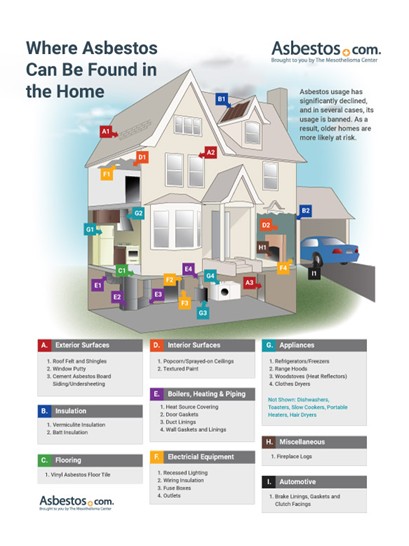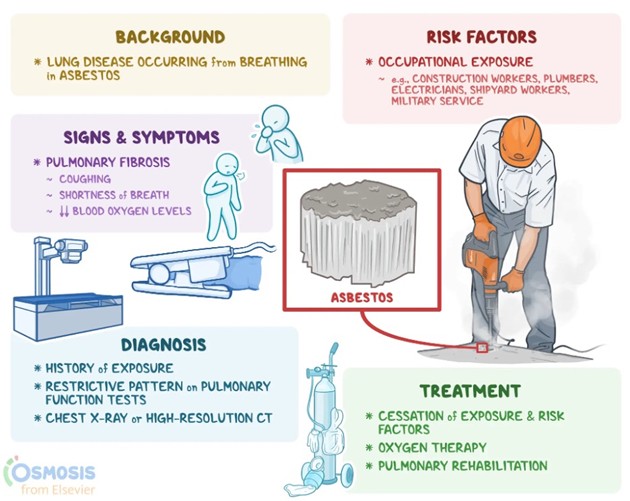Asbestos was once considered a ground-breaking material in construction. It became widespread across North America during the 1940s through the late 1970s for its durability, fire resistance, and insulating capabilities. Asbestos was everywhere – from insulating homes to soundproofing schools and office buildings – and few questioned its safety.

But beneath its utility lay a deadly secret. Over the next decades, medical evidence began to show a link between asbestos exposure and severe and irreversible health issues. Public awareness had changed dramatically by the 1980s, and governments began prohibiting its use. For instance, in Canada, an all-out asbestos ban was implemented by 2018. However, millions of older homes, most often those without any modifications, still contain asbestos materials.
What Is Asbestos?
Asbestos is not a manufactured material; it is a class of fibrous silicate minerals found in nature. These very fine fibers are extremely tough and virtually fireproof, making them very attractive for all construction. But their small volume and sharp, needle-like morphology also make them extremely toxic to inhale. Once inside the lungs, asbestos fibers can remain buried in tissue for years and gradually degrade the body, therefore putting an individual at risk for cancer along with other illnesses.
Where Can Asbestos Be Found in Homes?
If you live in a home that dates back prior to 1990, there may be asbestos inside. It was found in products such as vinyl floor tiles, ceiling texture (sometimes called “popcorn” ceilings), insulation (particularly vermiculite insulation in attics), drywall joint compound, ductwork wrap, and even some types of cement siding and roofing shingles. It is not always obvious where asbestos is hidden, and often materials containing asbestos can be harmless.
The danger comes when these materials are damaged or disturbed during renovations, repairs, or even everyday use. Whenever things made from asbestos break, crack, or break down, they release fibers into the air – fibers that can be inhaled and trapped in the lungs.
How Often Should You Test for Asbestos?
If you’re remodeling, dismantling, or disturbing materials in a home built before 1990, you should have those materials tested for asbestos first. Testing also should be done if you notice deteriorating insulation, flaking ceiling textures, or old flooring that is starting to lift. While some DIY testing kits are available, hiring a professional asbestos inspector is the safest and most reliable option. They’ll be able to detect risks without disturbing the material further, and they’ll explain what to do next if you find asbestos.
Why Is Asbestos So Dangerous?
The real danger of asbestos is its chronic health effects on humans. It is especially concerning that asbestos-related diseases can take decades to develop. Most widely recognized is mesothelioma, a rare and aggressive lung or abdominal cancer. Other diseases associated with asbestos include scarring lung disease and lung cancer.
The cruel thing about asbestos is that even small exposures over time can result in serious disease. Asbestos can not be safely handled, and professionals take extreme precautions when handling it.
What Caused Asbestos To Be Banned?
Many countries began banning asbestos use as public health research expanded and evidenced the devastating health consequences of exposure to asbestos. In Canada, asbestos was regulated starting in the 1980s and was outlawed completely by 2018. Similar bans exist worldwide, but some developing countries still use asbestos in construction materials because it is relatively inexpensive. The bans were instituted for worker protection as well as to prevent accidental, long-term exposure in homes, public buildings, and schools.
What Homes Should Be Treated With More Caution?
Any home built before 1990 should be treated with caution, especially if it hasn’t been renovated or updated. Particularly mid-century homes – those from the 1950s through the 1970s – will likely contain multiple asbestos materials. Older homes with original insulation, floor tiles, or ceiling finishes are also at increased risk.
Whenever you purchase, sell, or flip an older house, it is usually smart to get it inspected before starting any renovation work. This is especially true if you do DIY projects, as tasks like cutting through drywall, stripping old flooring, or knocking down ceilings without care could release asbestos fibers into the air.
Final Thoughts
It may seem like a distant issue, but asbestos is a real threat today. Some materials may be harmless if left untouched, but if they are disturbed or damaged in any way, the fibers they release silently can make people sick for decades. If you live in an older home, be informed and avoid unnecessary risks. Testing for asbestos before renovations is more than a safety measure; it’s a way to ensure the health of yourself and everyone in your home. You can’t really help what you can not see, and with asbestos, ignorance is not bliss – it’s exposure.
Learn more about asbestos and related topics here:
https://www.asbestos.com/exposure/home/
https://www.osmosis.org/answers/asbestosis

